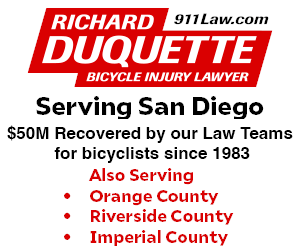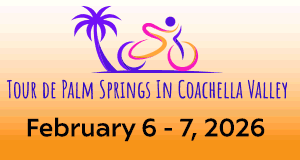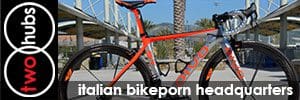Mayor Villaraigosa Mandates the Implementation of a 1,680 Mile Bikeway System
7/7/11 - In an Executive Directive, Mayor Antonio Villaraigosa has called on the City’s General Managers to implement the Los Angeles Master Bicycle Plan, a blueprint to build a 1,680 mile, city-wide bikeway system. The Mayor’s Executive Directive, which took effect on July 1, 2011, ensures all City departments and agencies coordinate on bike-related matters to meet the City’s ambitious alternative transportation goals.
“By adding 1,600 miles of bicycle lanes to our City’s landscape, we will give the vast majority of Angelenos access to a City bikeway within one mile of their home,” Mayor Villaraigosa said. "The Bicycle Plan will help improve the quality of life for every Angeleno by providing another clean transportation option for their daily commute, improving the quality of the air, and making it more accessible to lead a healthy, active lifestyle. This plan would not have even been possible without the support of Angelenos, since Measure R funds will help fund the expansion of our bicycle system and our other efforts to create a world-class, multi-faceted transit network seamlessly linking each and every neighborhood in Los Angeles.”
The Executive Directive calls upon all General Managers to incorporate bike-friendly features into all of the City’s capital improvements, develop consistent bicycle-related standards, and expand existing public education campaigns and training programs to include bicycle related information.
"We applaud Mayor Villaraigosa for continuing to show leadership in not only passing a strong bike plan, but also in implementing it,” said Jennifer Klausner Urban Strategy Director, Los Angeles County Bicycle Coalition. “This commitment goes a long way in showing everyday cyclists that the City is committed to making their lives and commutes safer. Most excitingly, it also nudges other cities in the County to step up and to create and implement their own bicycle plans and policies.”
The Executive Directive mandates the building of 40 miles of bikeways each year. This is an increase of four times the previous annual construction average. Efforts will be focused on closing gaps in the existing network and creating new bikeways in lower income and underserved communities.
“The members of the Los Angeles Bicycle Advisory Committee have been working diligently to participate in moving forward with the initial bike facilities projects identified in the plan as highest priority for implementation,” said Jay Slater, Chairman, LA Bicycle Advisory Committee. “We have been meeting with most City Council members and their staffs to work on the projects in their districts. The Mayor’s Executive Order will be a tremendous asset in making our work move more quickly.”
“There are a growing number of Angelenos who ride their bikes to work, for pleasure and to get exercise and stay fit,” said Barbara Broide of the Homeowners Association Westwood South of Santa Monica Blvd. “Those riders and those of us perhaps a bit too frightened to venture out in city traffic amongst SUV's and buses will all benefit from the implementation of a network of bicycle routes that give all bicyclists the freedom to safely ride.”
The City originally adopted a plan in 1977 that envisioned a 600 mile citywide bikeway network. A second plan in 1996 designed a 673 mile network. The New Master Bicycle Plan designates a citywide network of 1,680 miles—673 miles from the 1996 plan plus an additional 1,007 miles.
The plan includes three main bikeway networks—the Backbone Network, the Neighborhood Network and the Green Network. When completed, the three networks will give a vast majority of Angelenos access to a City bikeway within one mile of their home.
The 707 mile Backbone Network, comprised primarily of bicycle lanes, will enable access to major employment centers, transit stations and stops, and educational, retail, entertainment, and recreational resources.
The 834 mile Neighborhood Network includes local streets with low traffic volumes and slower speeds where bicyclists of all experience levels can feel comfortable. The Neighborhood Network will enable all bicycle riders, including children, families, young adults, and seniors, to access neighborhood facilities including schools, libraries, shopping districts, parks and open space.
The 139 mile Green Network enhances access with bicycle paths and shared use paths to the City’s green open spaces particularly river channels like the Los Angeles River.
The Bike Plan will be funded by Measure R Local Return Funds, local funds from the Transportation Development Act, Federal grant funds from the MTA’s Call for Projects, the State’s Building Transportation Account and Federal and State Safe Routes to Schools.
The City also created a Bicycle Plan Implementation Team to ensure public participation and transparency in the implementation of new bicycle facilities and programs.
The City’s Master Bicycle Plan is the collaborative product of the Los Angeles Department of City Planning, the Department of Transportation, the Los Angeles County Bicycle Coalition, the greater bicycling advocacy community, City Council and the Mayor’s office.
The City of Los Angeles will also be hosting a ThinkBike conference on September 22nd to September 23rd. ThinkBike is sponsored by the Dutch government and is an intensive two day workshop in which Dutch bicycle experts, representatives from DOT, elected officials, urban planners and designs, bicycle advocates and the general public create innovative design proposals for two bike projects: Van Nuys Blvd in Pacoima and Spring and Main in downtown. The fact that Los Angeles was chosen to host the conference serves as international recognition for the strides LA has made in becoming a bicycle friendly city and advancing the City’s bicycle infrastructure.
The Mayor’s commitment to creating bicycling as a viable transportation option is his latest clean transportation initiative in Los Angeles. The City of Los Angeles Department of Transportation (LADOT) currently operates 100% cleaner fueled buses in the 205 bus DASH fleet, and now LADOT is in the process of converting its 105 bus Commuter Express fleet to cleaner fuels as well. The Mayor also pushed for the Clean Truck Program that established a progressive ban on polluting trucks at the Port of Los Angeles. Since the program started in October 1, 2008, the Clean Truck Program has delivered an estimated 70-percent reduction in air emissions at the Port. The Mayor has also spearheaded an electric vehicle plan that offers DWP subsidies for at home charger installations to make it easier and more convenient for Angelenos to own electric vehicles.








